Lilly Ashton writes about Hiroshima:
Hiroshima, I think, could be the greatest place on Earth. It has this one, big, wide road running down its centre – Heiwadori, or “peace street” – and you can see big, endless hills in three directions. There’s something captivating about it. It’s the perfect city, full of restaurants and boutiques and 7/11s as needed, but with such vast expanses of greenery. Heiwadori is decorated with tons of flowers, and the parks are big and luscious.
Although I’ve known that Hiroshima is a place people live and visit–the main character in the 2024 movie Touch visits there, for but one example–it nonetheless came as a surprise to read a blogger talking about drinking matcha latte there.
“What about the radiation?”, I asked myself.
The City of Hiroshima, understandably, covers this on its website:
Q. Is there still radiation in Hiroshima and Nagasaki?
The radiation in Hiroshima and Nagasaki today is on a par with the extremely low levels of background radiation (natural radioactivity) present anywhere on Earth. It has no effect on human bodies.
Atomic bombs differ from conventional bombs in emitting explosive energy on an entirely different order of magnitude and radiation. Of the emitted energy, 5% was initial radiation and 10% was residual radiation.
The initial radiation emitted at the moment of detonation inflicted great damage to human bodies. Most of those exposed to direct radiation within a one-kilometer radius died. Residual radiation was emitted later. Roughly 80% of all residual radiation was emitted within 24 hours. Research has indicated that 24 hours after the bombing the quantity of residual radiation a person would receive at the hypocenter would be 1/1000th of the quantity received immediately following the explosion. A week later, it would be 1/1,000,000th. Thus, residual radiation declined rapidly.
As an aside, you should really watch the movie Touch–it’s really good, and perhaps the best COVID-adjacent movie I’ve seen so far.
And Lilly Ashton’s blog is a good read too.
We woke up to a house without power—turns out that a section of our street lost power at 4:00 a.m.—and thus without coffee.

Fortunately Hurricane Fiona prepared us for this, and the emergency backup coffee system deployed.
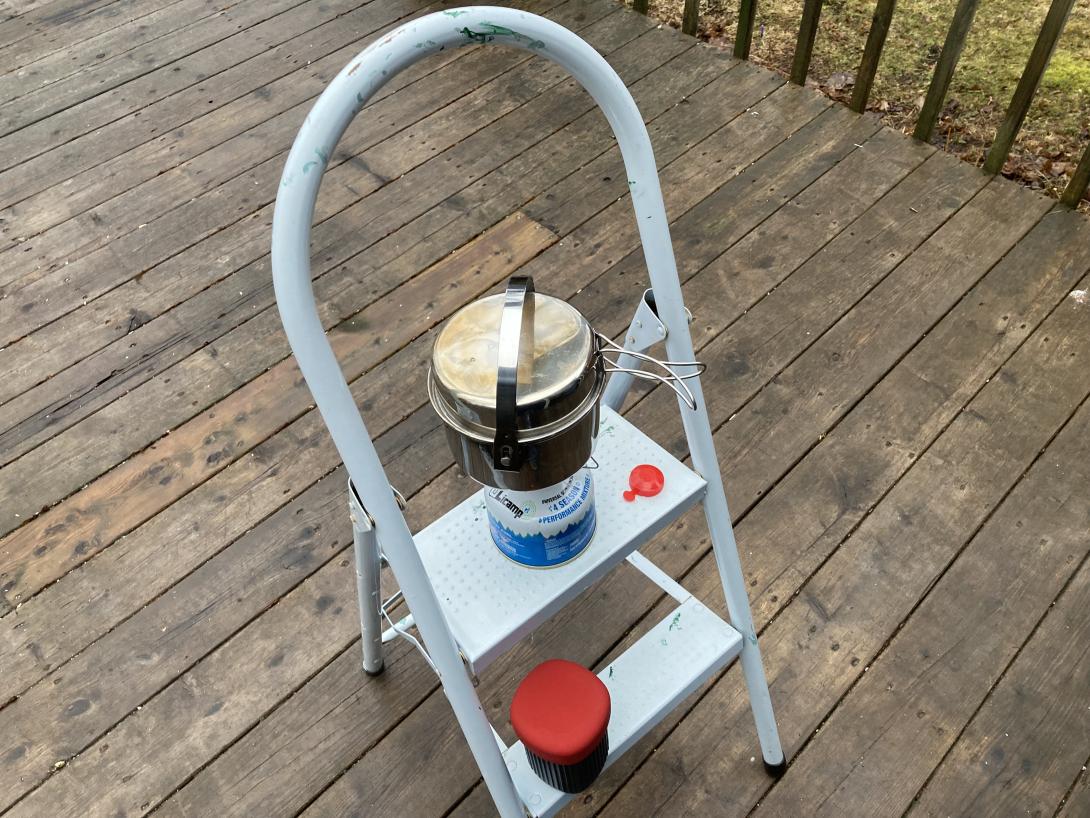
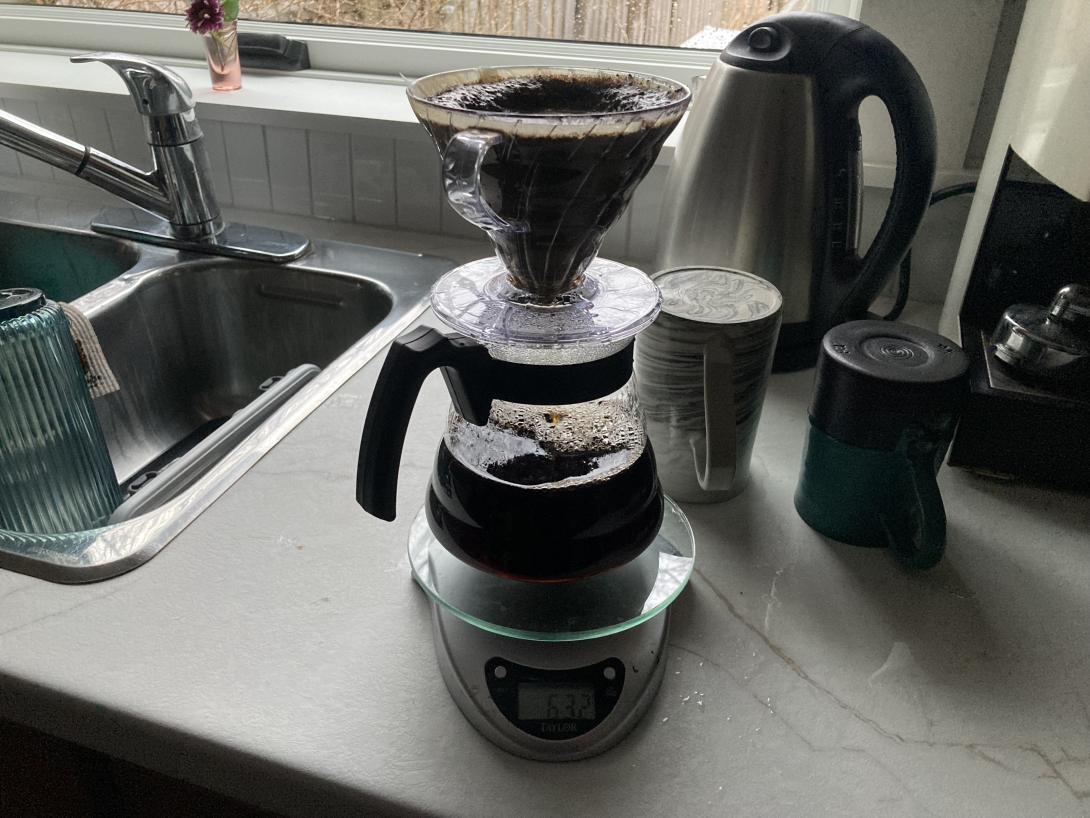
As we were drinking coffee, we noticed Maritime Electric workers replacing a transformer on a nearby pole:
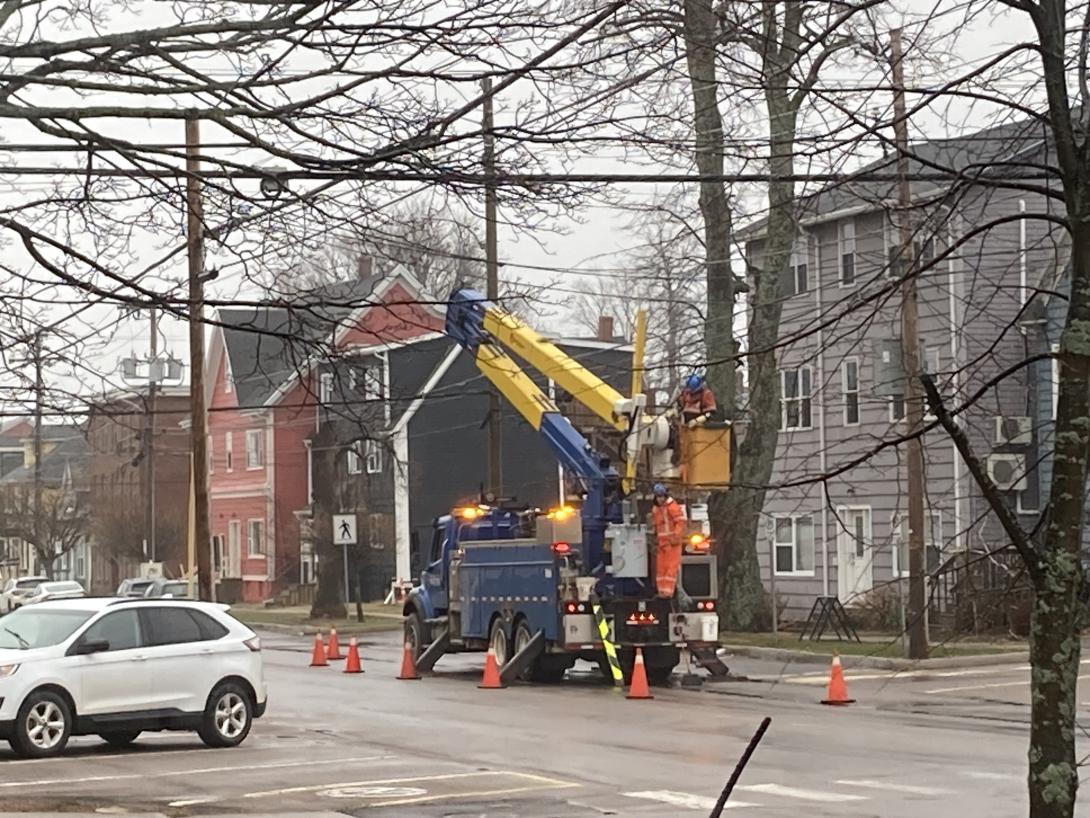
This explains the big bang we heard while we were asleep.
I happened to have my head out the window just before 8:00 when the line worker flipped the transformer on with a long orange pole: the power came on instantly. It was like watching God’s lightswitch.
From a recent People & Blogs with Matt Webb:
Given your experience, if you were to start a blog today, would you do anything differently?
If I were to start a blog today, I would start an email newsletter. And that would be a mistake.
I agree.
Although I published a tiny email newsletter for 6 years, and it was helpful in innumerable ways, my instrument is the blog, not the newsletter.
And yet I realize that not everyone (relatively speaking, let’s be honest, very few) have a toolchain set up to read blogs by RSS, as god intended.
And so, as a service to the travelling public, I’ve long supported subscribing to this blog by email, via a daily digest received on days when there are posts.
I originally did that using Feedburner, then MailChimp, and now, starting a few weeks ago, Buttondown.
The switch to Buttondown was triggered by MailChimp just, one, day breaking down and giving up, with no clear path to a diagnosis. I’d been reading the blog of Buttondown’s founder for awhile, and liked the cut of his jib, so I exported my 100-odd subscribers from MailChimp, imported them into Buttondown, and setup an RSS-to-Email pipeline. It was pretty painless.
Things haven’t been all rosy since then: after a day of successful operation, my Buttondown digest stopped sending, with items piling up in the queue. Support was friendly, but the path to a solution was slower than I would have liked. They worked hard to repair our relationship—harder, I imagine, than my $9/month fee warrants—and things seem to be working fine now (although there was a mysterious empty email that went out a few days ago that I’m waiting to hear about from support).
This is all to say: if you want to read the blog, but prefer the convenience of receiving it by email, feel free: subscribe right here.
In the season 7 episode of Billions, Original Sin, political consultant Bradford Luke walks into (billionaire and possible presidential candidate) Mike Prince’s office:
Prince: How do you have Leo McGarry-like walk in privileges before you’ve even taken the job?
Luke: Walk with a true sense of purpose. No one ever stops you.
The Leo McGarry reference is, of course, to The West Wing—another fictional universe—where Leo McGarry was President Bartlett’s Chief of Staff, and often walked in with exactly the same demeanour:
I love the fiction-to-fiction reference; Billions is rife with pop culture references, to an often absurd extend, but this one I love.
One of Charlottetown’s oldest businesses is set to close shortly. Taylor’s Jewellers, in Confederation Court Mall, has this sign up in its windows:
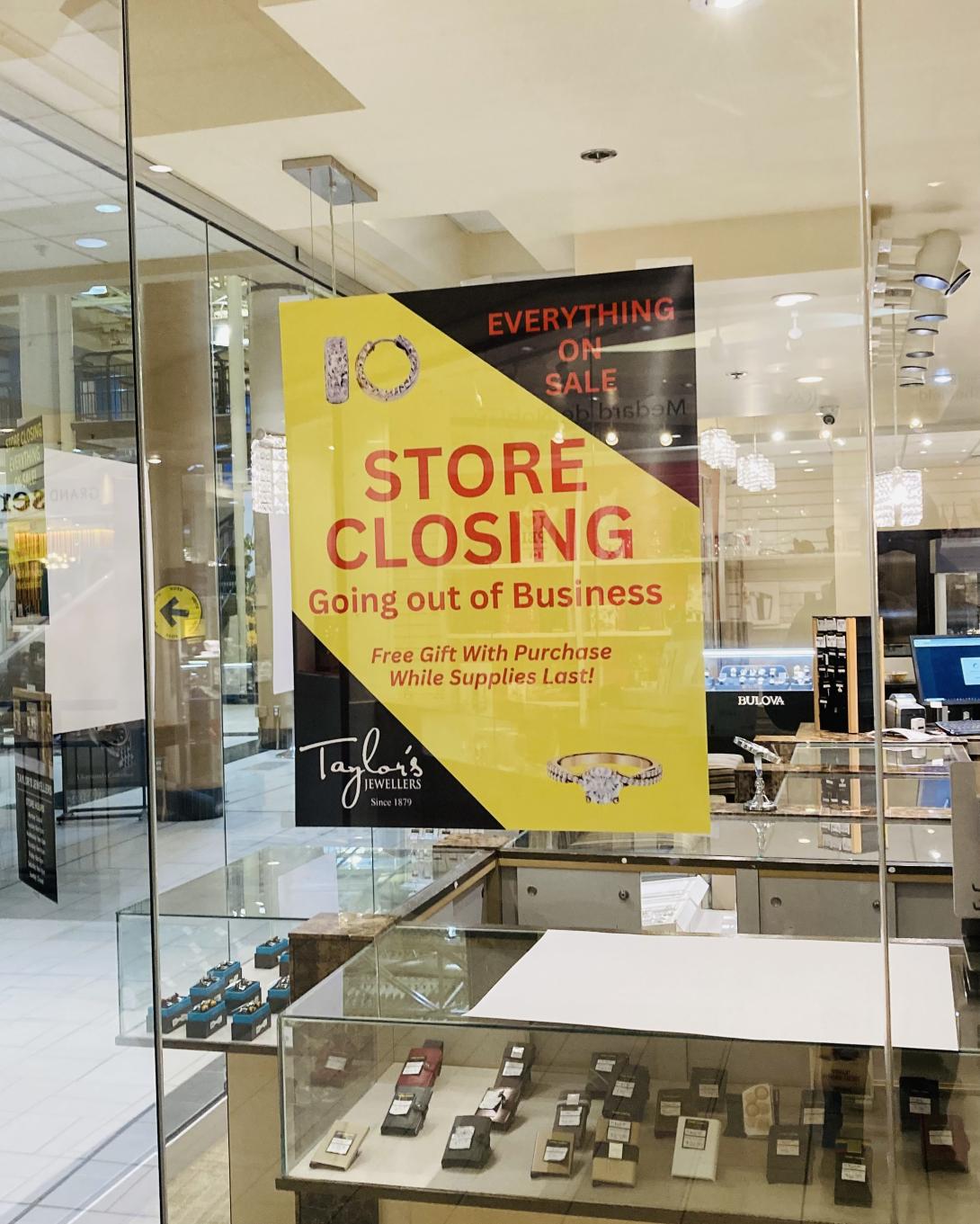
The business was founded in 1879, 146 years ago:
In 1879, jeweller, J.F. MacKay would sell his stock to G.H. Taylor. Taylor, who had recently arrived in Prince Edward Island from England, took over the building at 119-121 Grafton Street and divided it into two sections. Taylor operated a jewellery store from the eastern section and W.R. Boreham ran a shoe store from the western section. Taylor’s Jewellers would remain in the building for over 100 years. The business would move further into the Confederation Court Mall in the 1990s and continues to sell jewelry to this day.
Here’s an ad from the March 1, 1898 Guardian for the business:
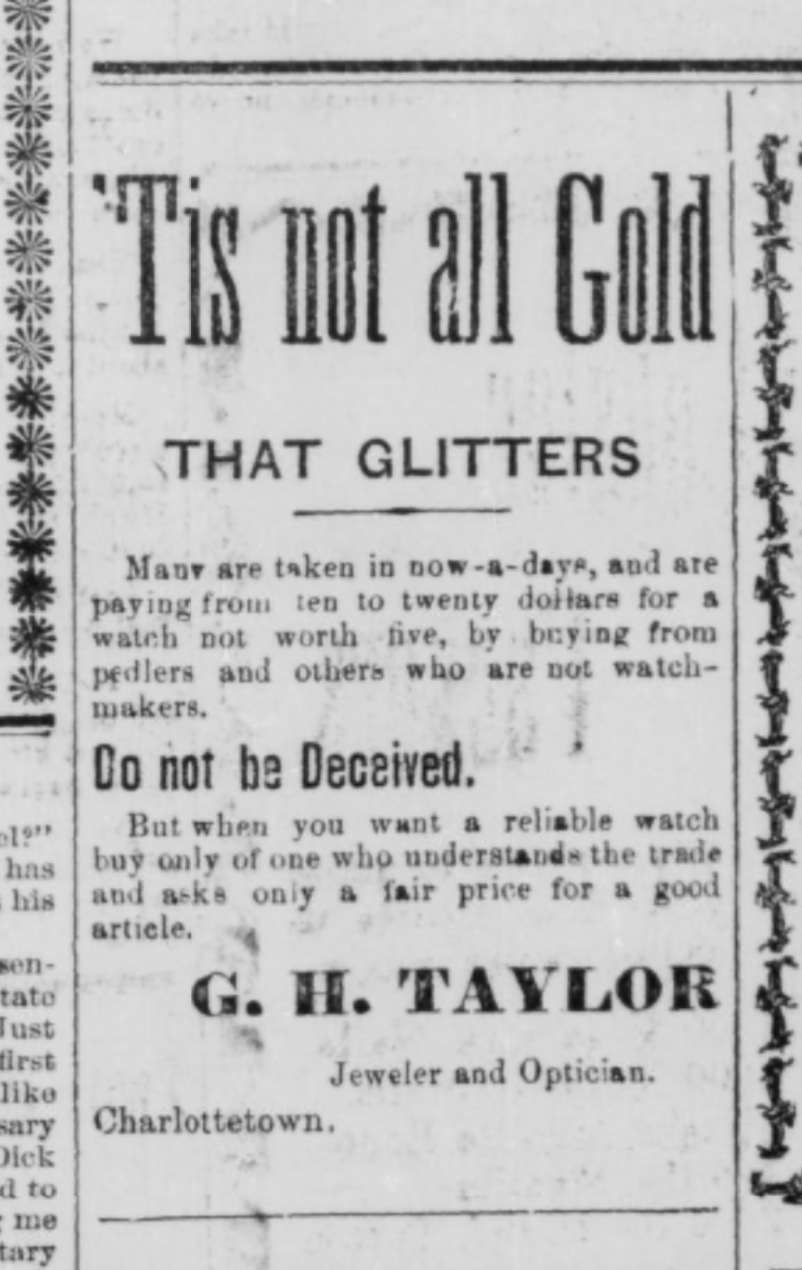
Posted earlier today on their Facebook page:
It is with a heavy heart that we announce our store will be closing its doors for the final time on May 15th.
After being part of this community since 1879, it’s hard to say goodbye.
We want to extend a heartfelt thank you to all our loyal customers who have supported us through the years. Your patronage has meant the world to us, and we’re truly grateful for the memories we’ve shared.
As we prepare for this next chapter, we’ll be offering special discounts and deals, so please stop by before we close. We hope to see you one last time.
Thank you for being part of our journey.
Meanwhile, just a hundred feet away, Blank Canvas, our local art supplies shop, is set to relocate from the corner of Prince and Water into the space in the mall last occupied by a party supply store, in the hallway that leads to Great George Street:
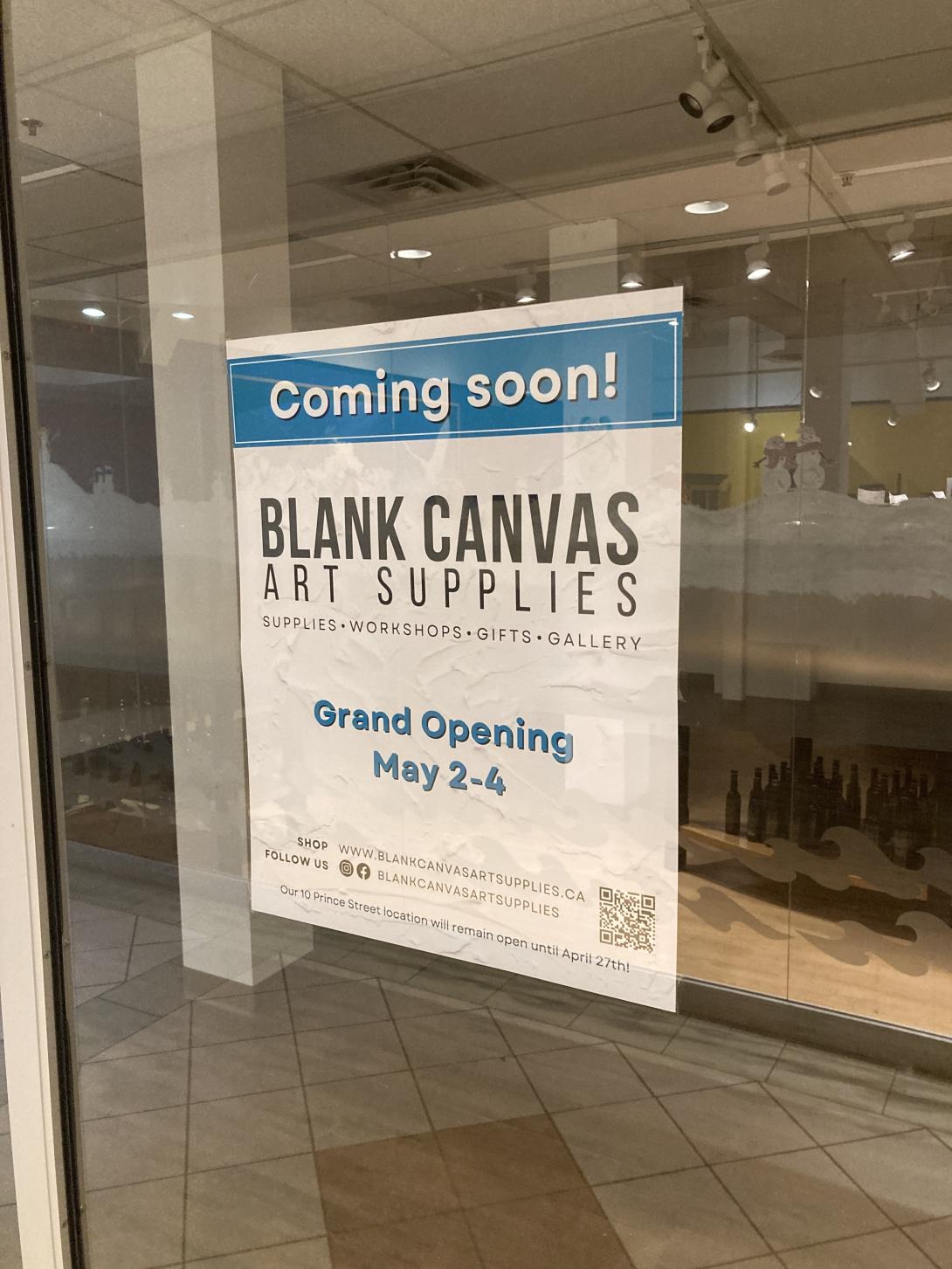
We’re regular customers at the shop; it’s so lovely to have a well-stocked shop like hers in the neighbourhood. It’s heartening that she’s found a secure new space, and it’s great for us that it’s still in the neighbourhood (40 m and one minutes walk farther from the current location, but we’re not complaining).
It is a CrossFit tradition to do burpees on your birthday, one for every year you’ve lived.
I got out of this last year, but today, working out with Lisa in Matt Cormier’s garage, it somehow came to pass that burpees-in-great-number were already on the docket, before my Saturday birthday was revealed to Matt.
So we did burpees-in-great-number, a 7 minute AMRAP. Both Lisa and I completed 64.
Mine were of various styles, relative to the reference burpee Matt performed, but I fell down, and got back up again, by whatever method, 64 times.
And I’m only turning 59!
From a New Yorker profile of actor Jeremy Strong by Michael Schulman:
As it turned out, “The Ballad of Jack and Rose” would change his life. The film, directed by Rebecca Miller, starred Miller’s husband, Daniel Day-Lewis, as an aging hippie living on an abandoned commune. Strong got himself hired as Day-Lewis’s assistant for the shoot, on Prince Edward Island. Day-Lewis was already legendary for his immersion techniques: staying in character between takes, building his own canoe for “The Last of the Mohicans.” He arrived in Canada early and helped the crew construct the commune houses, since his character would have built them. (After he botched a window installation, the crew assigned him a dining-room table.) During the shoot, Day-Lewis lived in his own cottage, away from his family. Since his character wastes away from a heart ailment in the course of the film, he starved himself, eating a meagre vegan diet, and became so emaciated that Miller was alarmed.
The Ballad of Jack and Rose was filmed in Rock Barra, PEI in 2003.
From a conversation between Rick Rubin of the poet David Whyte on Rubin’s Tetragrammaton podcast:
And then the last step I call harvest, and that’s the ability to bring in the harvest of everything you’ve been working towards.
Both in the sense of, it might be harvesting a profit, but harvest in the sense of when you’ve produced a piece, it’s making sure it gets out in the world, and that you’re there with it when it’s out. So that’s another kind of harvest. Then there’s the celebration which is associated with harvest.
So many places you’ve just achieved something really marvelous together, and a split second later the next day you’re on to something else. There’s no celebration, there’s no saying, let’s go out to dinner, let’s look at what we’ve done, let’s slap each other on the back, let’s just go out on the river on a boat for a day, and just say we did that, and we’re quite remarkable, and let’s just give it a rest for a moment before we turn our face enthusiastically to the next sowing. Then the real corollary of harvest though is, are you harvesting in the hours of the day in which you’re working, or are you working in a dynamic of conditionality?”
“I’ll get to my happiness when I’ve done this project. I’ll do what I really want when the kids are through school, when the house is paid off, when I’m in a better relationship, when I’ve got this amount of money in the bank, when I’m retired, and the ultimate conditionality is I’ll get to it when I’m dead. When all the responsibilities have gone.
So are you harvesting in the hours of the day in which you’re dedicating yourself? Because it’s not a passive process to work. You’re shaping an identity.
It’s like practicing. You think of most people in what we call ordinary jobs. There are no real ordinary jobs, but you’re working eight, nine, if you’re in leadership, 10, 11 hours a day.
Imagine if you practiced a musical instrument for eight, nine, 10 or 11 hours a day. Wouldn’t matter if you had any musical proclivity at all. You would become incredibly good at the clarinet, at the piano, at the saxophone.
So you’re becoming incredibly good at whoever you’re practicing at being in the hours of the day. So Harvest asks you to say, by the way I am in my every day, who am I practicing at becoming? Do I actually want to become that person?
(via SIX at 6).
The Logical Song was the lead single on Supertramp’s 1979 album Breakfast in America.
The only large-scale stadium rock show I’ve ever been to was Supertramp’s 1979 appearance at Exhibition Stadium in Toronto; I went with my friends Steve, Sam, and Tom. The Logical Song was on the bill.
Kathleen Edwards recorded a cover of the song for her new album Covers that’s rather compelling.
(Another worthwhile track from the Edwards’ new album is her cover of Paul Westerberg’s Only Lie Worth Telling).
Earlier this month Harry Holman posted A Whale of a Tale, an account of the 1857 discovery of a whale carcass in Tracadie Harbour, first published in The Islander:
At the present time a novel spectacle, an enormous Whale – 75 feet in length – is to be seen at the entrance of Tracadie harbor, it being one of the largest animals of which we have any certain information. The carcass was found floating at sea, and towed into the harbor on Monday the 3rd inst., and has become an interesting object. During the last ten days it has been visited by an immense concourse of people from every section of the Island, anxious to have the opportunity of seeing one of these mighty monsters of the deep, so rarely thrown upon our shores.
Harry included this sketch of the whale by Caroline Louisa Daly, Stranded Whale at Tracadie Harbour:
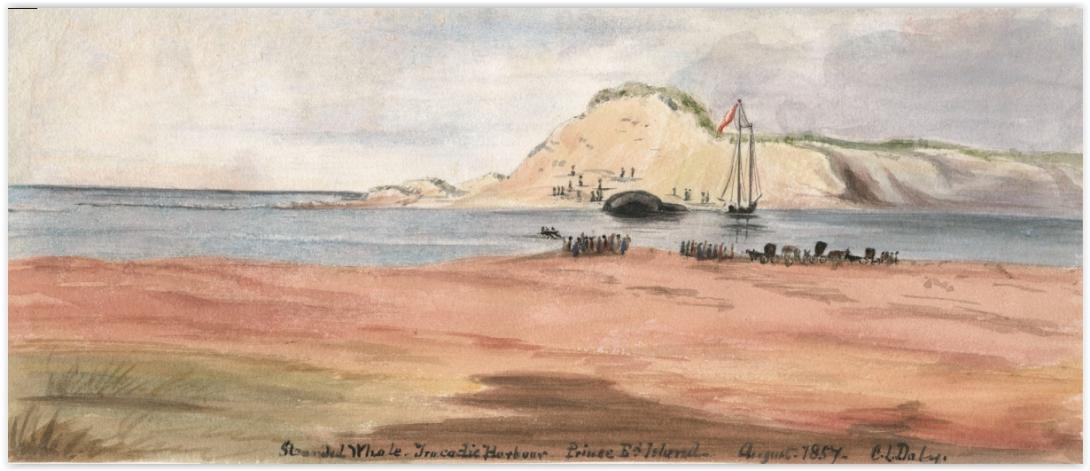
I immediately recognized Tracadie from my own early-COVID trip there in 2020, where I quickly sketched this:
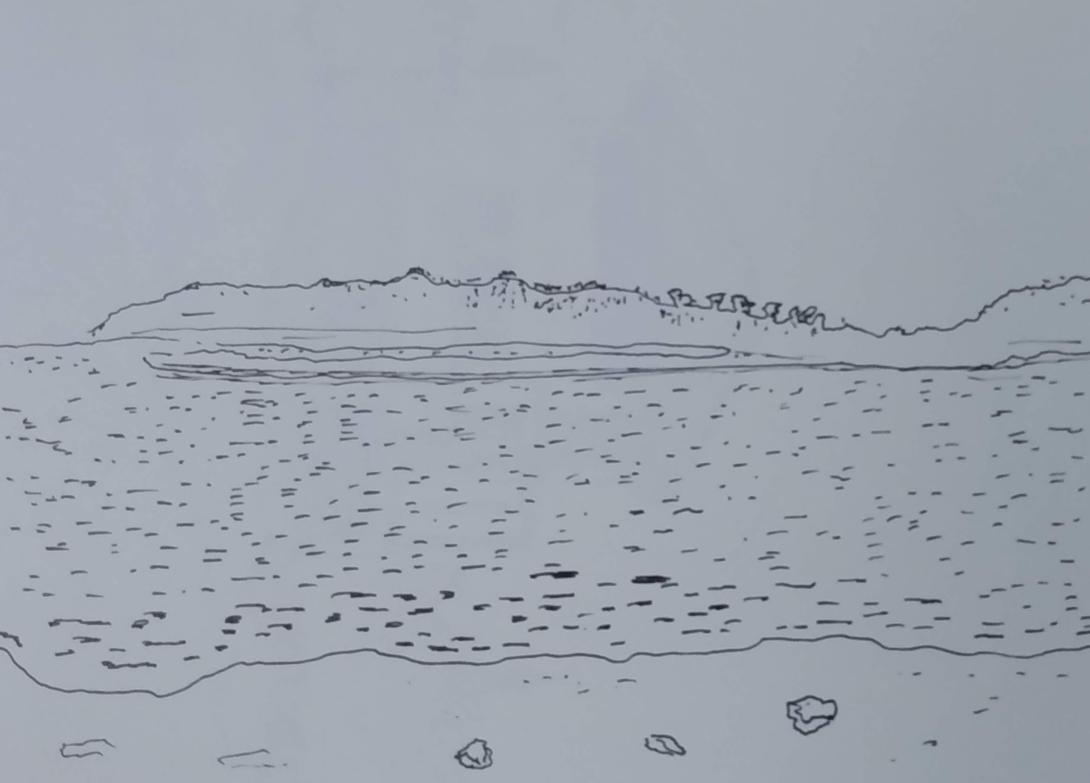
Tracadie Harbour has evolved considerably, especially over the 168 years since the whale ended up there, and yet the feel of the place is much the same.
 I am
I am